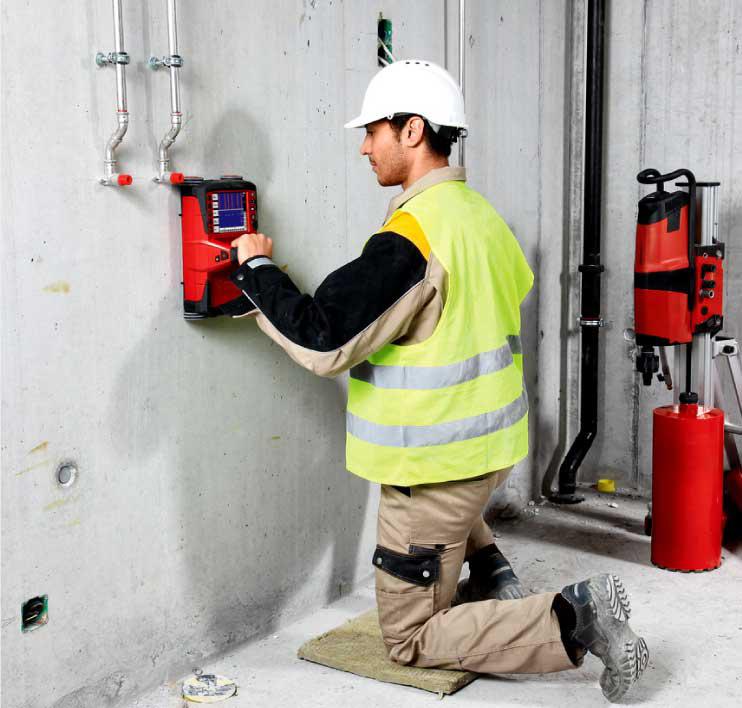RainierGPR Concrete Scanning: Trick Insights for Effective Projects
Wiki Article
Checking Out the Midst: A Comprehensive Overview to Concrete Scanning and Its Diverse Applications
In the world of building and construction and infrastructure development, the thorough procedure of concrete scanning holds a critical function in making sure the structural integrity and safety and security of tasks. As technology proceeds to progress, the applications of concrete scanning have broadened much past simple surface-level assessments. From identifying rebar and post-tension cords to drawing up voids and channels concealed within concrete structures, the abilities of contemporary scanning methods are both outstanding and important. Nonetheless, the real depth of concrete scanning's possible reaches also further, branching right into unforeseen industries and sparking cutting-edge options. The interconnected internet of opportunities that concrete scanning presents is not just remarkable however likewise vital for the development of different sectors.Relevance of Concrete Scanning
Understanding the value of concrete scanning is essential in guaranteeing the security and integrity of frameworks during building and construction and restoration projects. Concrete scanning makes use of sophisticated modern technologies such as ground-penetrating radar (GPR) and electro-magnetic induction to detect embedded items, spaces, or various other abnormalities within concrete frameworks.Furthermore, concrete scanning plays a pivotal role in ensuring conformity with building regulations and policies that mandate the security of existing architectural elements throughout building activities. By properly drawing up the inner composition of concrete, scanning innovations make it possible for building and construction professionals to make enlightened decisions that promote the structural stability and sturdiness of structures and infrastructure projects. In significance, the importance of concrete scanning exists in its ability to protect both the structural integrity and the personnel associated with construction endeavors.
Technologies Used in Concrete Scanning
Concrete scanning relies upon innovative modern technologies such as ground-penetrating radar (GPR) and electromagnetic induction to accurately spot embedded items and anomalies within concrete frameworks. Ground-penetrating radar operates by sending out high-frequency electro-magnetic waves into the concrete. When these waves encounter different materials or gaps within the concrete, they bounce back to the surface, enabling the GPR system to develop a comprehensive subsurface image. This modern technology is especially reliable in situating rebar, post-tension cable televisions, avenues, and other objects embedded in concrete.Electromagnetic induction, on the other hand, functions by producing magnetic fields around a concrete structure through a transmitter coil. When metal items are existing within the concrete, they disrupt these electromagnetic fields, causing eddy currents to stream via the metal. By determining the changes in the magnetic fields with a receiver coil, the system can determine the place of metal things in the concrete.
These sophisticated technologies play a crucial function in non-destructive screening, ensuring the safety and integrity of concrete structures in different markets.
Applications in Construction Sector
Within the building and construction sector, concrete scanning innovation locates diverse applications that enhance project effectiveness and safety. Additionally, concrete scanning is made use of for finding important site gaps, such as air pockets or locations of degeneration within concrete, which can compromise the general strength of a framework. Concrete scanning plays an important duty in high quality control by verifying the thickness of concrete covers over reinforcement, ensuring conformity with layout specs and standards.
Safety And Security Benefits of Concrete Scanning
In the realm of construction safety, the implementation of concrete scanning innovation presents a paramount advantage in preemptively recognizing possible threats and strengthening architectural stability. By using sophisticated scanning techniques such as ground-penetrating radar (GPR) and electromagnetic induction, construction teams can accurately situate rebar, post-tension cables, channels, and other surprise items within concrete frameworks. This proactive approach dramatically lowers the threat of unexpected strikes during boring, cutting, or coring activities, thus stopping costly damages, injuries, and job delays.Additionally, concrete scanning enhances employee security by supplying real-time info concerning the structural condition of concrete elements. This data allows building specialists to assess the stability of existing frameworks, identify degeneration or problems, and make educated choices concerning repair service and maintenance treatments. By attending to prospective safety issues immediately, concrete scanning contributes to creating a safe and secure workplace and reducing the likelihood of architectural failures or mishaps on building sites. Inevitably, the safety and security benefits of concrete scanning not just guard lives and properties however likewise maintain sector requirements for top quality and reliability.
Future Trends in Concrete Scanning
Emerging developments in scanning innovation are poised to revolutionize the area of concrete assessment and evaluation. One significant fad that is obtaining grip is the assimilation of expert system (AI) and artificial intelligence formulas into concrete scanning devices. By using the power of AI, these systems right here can evaluate substantial amounts of information collected during scanning procedures to offer more accurate and comprehensive understandings right into the condition of concrete structures. This can aid in discovering surprise defects, anticipating possible structural failures, and also recommending upkeep methods.Another significant trend is the development of more straightforward and mobile scanning tools. Miniaturization of scanning tools enables easier accessibility to constrained rooms and remote places, making inspections a lot more effective and extensive. In addition, developments in cordless communication modern technologies enable real-time data transfer and evaluation, assisting in quicker decision-making processes.
Moreover, there is a growing concentrate on sustainability in concrete scanning modern technologies - RainierGPR Concrete Scanning. Producers are increasingly including eco-friendly materials and energy-efficient features right into their tools to lower ecological impact. These future fads are established to enhance the performance, precision, and sustainability of concrete scanning techniques, shaping the industry's future landscape
Conclusion
In verdict, concrete scanning plays a vital role in the building industry by ensuring the safety and effectiveness of numerous projects. As technology developments, the future of concrete scanning holds promising growths for improving building and construction procedures.

Report this wiki page